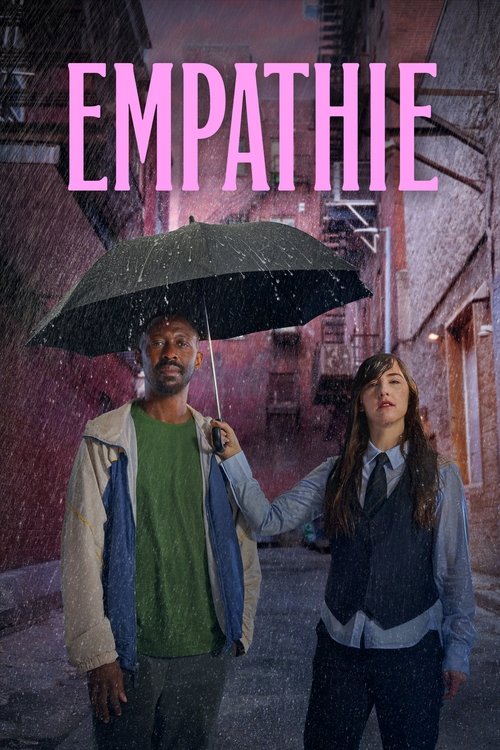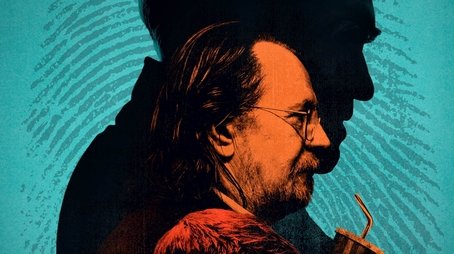
Ask Your Own Question
What is the plot?
Suzanne Oreste, a 38-year-old former criminologist turned psychiatrist, returns after a two-year absence to the Mont-Royal Psychiatric Institute to treat severe psychiatric cases. Despite battling a mysterious illness, she is determined to resume her work and finds herself confronting the darkest corners of human experience in the hospital setting.
On her first day back, Suzanne meets Mortimer, an intervention officer at the institute with a complex and intriguing personality. Together, they encounter a patient in crisis on the streets of Montreal, which sets the tone for the challenging cases they will face. This initial encounter highlights the intensity and unpredictability of the patients' conditions and the urgent need for compassionate intervention.
Suzanne begins her retraining and integration into the psychiatric environment, where she meets several outstanding patients, each with unique and severe mental health issues. Her background as a criminologist gives her a distinctive perspective on the patients' behaviors and histories, which influences her approach to treatment.
Throughout the series, Suzanne's interactions with Mortimer and the patients gradually change her relationship with others and with herself. She confronts her own vulnerabilities and the impact of her mysterious illness, which at times threatens to undermine her professional role but ultimately does not stop her from engaging deeply with her work.
A newcomer with a mysterious past arrives at the institute, adding complexity to the social dynamics and therapeutic environment. Suzanne and Mortimer work together to understand and support this new patient, navigating the challenges posed by the individual's history and mental state.
As the series progresses, Suzanne faces multiple confrontations and crises involving patients, including moments where she must intervene directly to prevent harm. These sequences are detailed and intense, showing step-by-step how she and Mortimer manage escapes, fights, or emotional breakdowns, emphasizing the high stakes of psychiatric care.
Key decisions by Suzanne include choosing to trust Mortimer's unconventional methods, advocating for patients' needs within the institutional bureaucracy, and confronting her own illness openly with colleagues. These choices drive the narrative forward and deepen the emotional resonance of the story.
By the end of the series, Suzanne has transformed through her experiences at the institute. She has developed stronger bonds with her patients and colleagues, gained new insights into human empathy and resilience, and found a renewed sense of purpose despite the ongoing challenges of her illness and the demanding nature of psychiatric work.
What is the ending?
The ending of the 2025 TV series Empathie concludes with psychiatrist Suzanne Oreste confronting the culmination of her personal and professional struggles at the Mont-Royal Psychiatric Institute. After navigating complex cases and her own mysterious illness, Suzanne reaches a turning point where she embraces her unique empathic abilities, leading to a resolution that balances her inner turmoil with a renewed sense of purpose. The main characters' fates are tied to this resolution, with Suzanne finding a fragile peace, while others at the institute face their own reckonings.
The final episode of Empathie unfolds in a detailed, scene-by-scene narrative:
The episode opens in the quiet halls of the Mont-Royal Psychiatric Institute, where Suzanne Oreste, visibly worn but resolute, prepares for a critical session with her most challenging patient. The camera lingers on her face, showing the weight of her mysterious illness and the emotional toll of her work. This scene sets the tone for the climax, emphasizing Suzanne's vulnerability and determination.
Next, Suzanne meets with the patient, a deeply troubled individual whose case has mirrored Suzanne's own struggles with empathy and isolation. Their interaction is intense and raw, with Suzanne employing her unorthodox methods--blending her criminology background with psychiatric insight--to break through the patient's defenses. The dialogue is sparse but charged, revealing layers of pain and connection. This breakthrough is pivotal, symbolizing Suzanne's acceptance of her empathic gift as both a burden and a tool for healing.
Following this, the narrative shifts to a confrontation between Suzanne and the institute's administration. They challenge her unconventional approach and question her fitness to continue, citing her illness and past controversies. Suzanne stands firm, articulating her belief that empathy, even when painful, is essential to truly understanding and treating patients. This scene underscores the central conflict between institutional rigidity and human complexity.
In a quieter moment, Suzanne visits a secluded garden within the institute grounds. Here, she reflects on her journey, the losses she has endured, and the fragile hope she clings to. The camera captures the interplay of light and shadow, mirroring Suzanne's internal struggle. This scene is intercut with flashbacks to earlier episodes, reminding viewers of her growth and the relationships she has forged.
The climax arrives as Suzanne faces a personal health crisis triggered by her illness. Despite the physical and emotional strain, she chooses to stay and support her patients during a critical incident at the institute--a patient's breakdown that threatens to spiral out of control. Suzanne's presence and empathy help de-escalate the situation, demonstrating her integral role in the community.
The final scenes show Suzanne in a moment of quiet triumph. She is seen walking through the institute's corridors, greeted with subtle nods of respect from colleagues and patients alike. Her illness remains, but it no longer defines her. The series closes on Suzanne looking out a window, a faint but genuine smile on her lips, suggesting a tentative but hopeful future.
Regarding the fates of other main characters involved at the end:
-
Suzanne Oreste remains at the Mont-Royal Institute, committed to her work despite ongoing health challenges, embodying resilience and acceptance.
-
Key patients who have been central to the season's narrative find varying degrees of stability or continued struggle, reflecting the complex nature of mental health.
-
The institute's administration, while initially resistant, begins to acknowledge the value of Suzanne's empathetic approach, hinting at institutional change.
This detailed ending highlights the series' exploration of empathy as a double-edged force--both a source of pain and a path to connection--while portraying Suzanne's journey as one of courage, acceptance, and the search for light in darkness.
Is there a post-credit scene?
The TV show Empathie (2025) does not have any publicly documented post-credit scene. Available sources including IMDb and other detailed descriptions of the series and its episodes do not mention or describe any post-credit scenes for Empathie.
The show focuses on psychiatrist Suzanne Oreste returning to treat severe cases at Mont-Royal Institute, with a strong emphasis on deep emotional and psychological drama, but no information about a post-credit scene has been noted in reviews or episode summaries.
What traumatic experience caused Suzanne's health issues and depression?
Suzanne's health issues and depression stem from a very traumatic experience in her past, which leaves her with a constant feeling of 'unbelievable heaviness' and sadness that follows her throughout the series.
How does Suzanne's relationship with Mortimer develop and affect their work at the institute?
Suzanne becomes very attached to and friendly with Mortimer, a colleague at the Mount Royal Psychiatric Institute who has a deeply empathic approach. Their mutual support helps them cope with the challenges of treating patients with severe mental illnesses who have committed serious crimes.
What is the nature of the patients Suzanne and Mortimer treat at the Mount Royal Psychiatric Institute?
The patients are individuals who have committed horrible crimes but whose actions are linked to their mental illnesses and life circumstances. The series explores the difficult balance of feeling empathy for these patients while confronting the reality of their crimes.
How does Suzanne's past as a criminologist influence her approach as a psychiatrist?
Suzanne, formerly a gifted criminologist, brings an unorthodox and deeply personal approach to psychiatry, challenging conventional methods at the institute and confronting viewers with complex questions about empathy and justice.
What role do flashbacks play in understanding the characters and their illnesses?
The series uses flashbacks to reveal the backgrounds and circumstances that led to the patients' illnesses and crimes, helping the audience understand their suffering and the complexity of their situations, which can be confronting to watch.
Is this family friendly?
The TV show Empathie (2025) is a comedy-drama centered on psychiatry, mental health, and human relationships, with a sensitive and light-hearted tone overall. It explores complex emotional and psychological themes through the experiences of a psychiatrist and her patients in a psychiatric institute.
Regarding family-friendliness, Empathie is not primarily designed for children. It deals with mature topics such as mental illness, emotional struggles, and institutional psychiatric care, which may be challenging or upsetting for younger or sensitive viewers. The show includes scenes that portray mental health issues and the emotional difficulties faced by patients and caregivers, which could be intense or distressing.
Potentially objectionable or upsetting aspects for children or sensitive people include:
- Depictions of psychiatric patients with severe mental health conditions.
- Emotional and psychological distress portrayed in patient and caregiver interactions.
- Themes of depression, anxiety, and other mental illnesses.
- Some scenes may involve intense emotional confrontations or vulnerable moments.
- Symbolic sequences (such as ballerinas representing inner struggles) that convey complex emotional states.
The series does not focus on violence, explicit content, or graphic scenes but is more about emotional depth and social reflection in a psychiatric setting. It is best suited for mature audiences, likely teenagers and adults, rather than young children or highly sensitive viewers.
In summary, Empathie is not family-friendly for young children due to its mature themes and emotional intensity, though it is handled with sensitivity and humor. Parents should consider the mental health subject matter and emotional complexity before allowing children to watch.




























